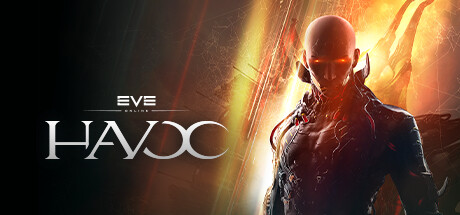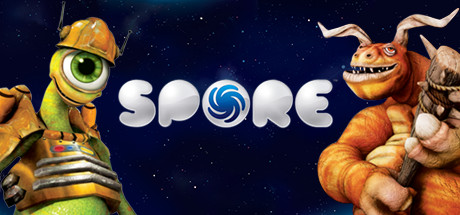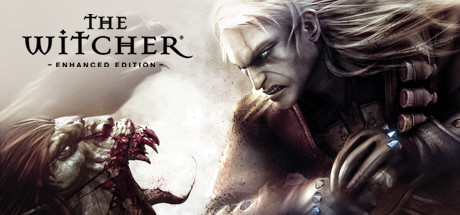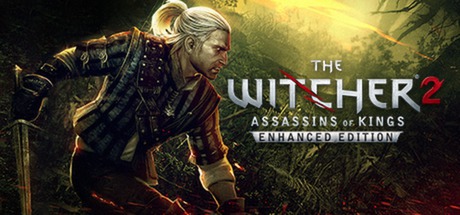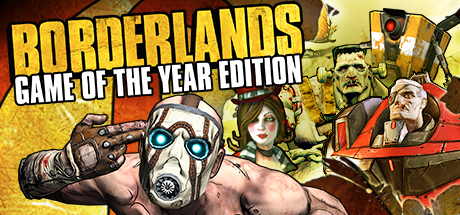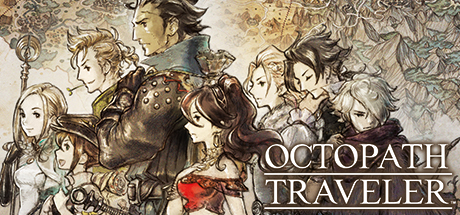
1 131
Players in Game
13 070 😀
2 118 😒
84,07%
Rating
$23.99
OCTOPATH TRAVELER™ Reviews
Eight travelers. Eight adventures. Eight roles to play. Embark on an epic journey across the vast and wondrous world of Orsterra and discover the captivating stories of each of the eight travelers.
| App ID | 921570 |
| App Type | GAME |
| Developers | Square Enix, ACQUIRE Corp. |
| Publishers | Square Enix |
| Categories | Single-player, Steam Achievements, Steam Cloud, Full controller support, Remote Play on TV, Steam Trading Cards, Remote Play on Phone, Remote Play on Tablet |
| Genres | RPG |
| Release Date | 7 Jun, 2019 |
| Platforms | Windows |
| Supported Languages | French, Italian, German, Spanish - Spain, Simplified Chinese, Traditional Chinese, English, Korean, Japanese |

15 188 Total Reviews
13 070 Positive Reviews
2 118 Negative Reviews
Very Positive Score
OCTOPATH TRAVELER™ has garnered a total of 15 188 reviews, with 13 070 positive reviews and 2 118 negative reviews, resulting in a ‘Very Positive’ overall score.
Reviews Chart
Chart above illustrates the trend of feedback for OCTOPATH TRAVELER™ over time, showcasing the dynamic changes in player opinions as new updates and features have been introduced. This visual representation helps to understand the game's reception and how it has evolved.
Recent Steam Reviews
This section displays the 10 most recent Steam reviews for the game, showcasing a mix of player experiences and sentiments. Each review summary includes the total playtime along with the number of thumbs-up and thumbs-down reactions, clearly indicating the community's feedback
Playtime:
1412 minutes
Octopath Traveler is a stunning homage to classic JRPGs, brilliantly reimagined with modern sensibilities by Square Enix and Acquire. Released initially in 2018 for the Nintendo Switch and later ported to other platforms, the game combines turn-based combat, deep character progression, and a rich pixel-art aesthetic to deliver a nostalgic yet fresh experience. Its signature “HD-2D” visual style—blending detailed sprite work with dynamic lighting and depth-of-field effects—creates a breathtakingly unique presentation that breathes new life into the genre’s traditional look. But Octopath Traveler is more than just a pretty face; it’s a bold attempt at nonlinear storytelling and strategic depth that makes it stand out among its RPG contemporaries.
The most distinctive feature of Octopath Traveler is its narrative structure. Rather than following a single hero’s journey, the game offers eight distinct protagonists, each with their own backstory, motivations, and personal quests. Players can start with any of the eight characters—ranging from a noble warrior seeking redemption to a thief on the run—and gradually recruit the others as they explore the world of Orsterra. Each character’s story unfolds in chaptered arcs, giving the game an episodic quality. While this structure allows for immense narrative variety and freedom of exploration, it also results in some disjointedness, as the characters don’t meaningfully interact with each other outside of limited party banter. This can make the party feel more like traveling companions than a cohesive group united by a common goal.
However, what the game lacks in overarching narrative unity, it more than makes up for in world-building and gameplay systems. Orsterra is a beautifully realized world filled with diverse regions, towns, and dungeons that invite exploration. The writing for individual character stories is often compelling, tackling themes such as revenge, faith, loyalty, and justice. Whether you're unraveling a cleric's struggle with corrupt institutions or guiding a merchant in search of purpose, each journey feels personal and richly developed. Side quests and NPC interactions, enabled by the unique "Path Actions" each character possesses (like scrutinizing townsfolk for secrets or stealing items), add further layers of depth to the game world and often influence how players approach different scenarios.
Combat in Octopath Traveler is where the game truly shines. Its turn-based system is fast, engaging, and loaded with strategic nuance thanks to the innovative Break and Boost mechanics. Enemies have specific weaknesses that, when exploited, break their defenses and leave them stunned for a turn, allowing players to unleash devastating combos. Boost Points, earned each round, let characters power up attacks or cast multiple skills in a single turn. These mechanics encourage thoughtful planning and make even standard battles feel dynamic and tactical. Each character also has access to a unique job class, and later on, the ability to take on secondary jobs, allowing for deep customization and synergy between party members.
The game’s soundtrack, composed by Yasunori Nishiki, deserves special mention. It’s a sweeping, orchestral masterpiece that elevates every scene—whether it's a tense boss fight, a tranquil village, or an emotional cutscene. The music adapts beautifully to the game’s changing tone and environments, reinforcing the emotional weight of each character’s journey and adding grandeur to the world of Orsterra.
Graphically, Octopath Traveler is nothing short of breathtaking. The blend of pixel art with modern visual effects creates a timeless style that captures the spirit of SNES-era RPGs while adding depth and fluidity impossible in the games that inspired it. Lighting effects, weather changes, and layered environments provide a strong sense of place and atmosphere. Each region has its own visual identity, from snow-covered mountains to sun-drenched deserts, making exploration continually rewarding.
Despite its many strengths, the game does have a few shortcomings. As mentioned, the lack of interwoven storytelling between the main characters may leave some players feeling disconnected from the overall narrative. Additionally, some character arcs—especially in their early chapters—can feel formulaic or underdeveloped until they gain momentum. The game’s structure, which involves repeating the same format for each character (Chapter 1 to 4), can also feel a bit repetitive over time if not balanced by exploration or side activities.
In conclusion, Octopath Traveler is a brilliant reinvention of classic JRPG tropes wrapped in a modern and visually stunning package. It’s a game that respects its roots while daring to experiment, delivering a deep and satisfying turn-based combat system, memorable characters, and a rich, beautifully crafted world. While its fragmented storytelling and lack of party cohesion may be divisive, its strengths in gameplay, presentation, and atmosphere far outweigh its weaknesses. For fans of classic role-playing games and newcomers alike, Octopath Traveler is a must-play experience that showcases how the genre can evolve without losing its soul.
Rating: 8/10
👍 : 2 |
😃 : 0
Positive
Playtime:
14529 minutes
A Near-Perfect Odyssey: A Review of Octopath Traveler
Score: 9.5/10
IIn the world of Japanese Role-Playing Games (JRPGs), Square Enix's Octopath Traveler stands out for its stylistic confidence and mechanical brilliance. It pays homage to the 16-bit era while also pushing boundaries, showcasing a remarkable "HD-2D" art style that beautifully blends expressive character sprites with modern 3D environments. Every location feels intricately crafted, enhancing the overall experience.
Yasunori Nishiki's phenomenal score further elevates the game, with distinct leitmotifs for each of the eight protagonists and exhilarating battle themes that create a gripping atmosphere. The combat system is a highlight, utilizing "Boost" and "Break" mechanics that add a layer of strategic depth, alongside a flexible job system that encourages creative party combinations.
However, the game does have its issues. The primary drawback is its narrative structure: while eight unique stories unfold, they feel disconnected. Characters do not interact meaningfully during each other's story arcs, missing an opportunity for a cohesive narrative. Additionally, the navigation can be cumbersome, with the map systems lacking the precision needed for smooth exploration.
Despite these shortcomings, Octopath Traveler remains a masterpiece of art, music, and design, offering a rich experience that any JRPG enthusiast should not miss. It is a near-perfect odyssey that, while lacking in narrative unity and some navigational fluidity, doesn't diminish the brilliance of its individual pieces.
👍 : 4 |
😃 : 0
Positive
Playtime:
10591 minutes
Worthy of being considered among the JRPG classics of old. This game features an innovative variant on the job system, where each character has an innate job, and they can choose a second job, meaning that each possible pairing of jobs can only be accomplished by two of the 8 characters. Additionally, combat features a fantastic mechanic of having to break shields by focusing on enemy vulnerabilities, and the Boost mechanic works great. Combat is, for the most part, a lot of fun in this game. The graphics are nice although the shallow depth of field is at times distracting. The character sprites in particular are the best 2D character sprites I've ever seen, stylistically similar to FF6 but with less rigid postures. The music is well above average with a few tracks that are transcendent in quality (Chapter 3 boss fights especially). Each character has a great personality that really makes you want to find out what happens to them. All of this suggests a game that should be 10/10. Now, let's talk about the two main things that keep it from getting there.
First, while each character has a great story, other characters are not involved in them at all. You have a party of up to 4 characters but they all mysteriously vanish when a character-specific scene is taking place. Which is a bummer because you never see those other characters chime in, you never see them jump to defend whichever character the story is focused on. It occasionally breaks believability a few times, such as when Primrose falls unconscious and nobody else is there to do anything about it despite that they were all just there for the fight that took place. I'm not really sure why the other characters aren't involved. I get that the game can't know which characters will be present, but other games have handled that without a problem. Final Fantasy 6, for example, lets you shuffle up your party however you want, but when you progress the story, generally all of the characters have something to contribute. Trails in the Sky is another example. So, deduct a point for that.
With that said, I was ready to give the point back if the final quest of the game, which requires having all 8 characters, accomplished bringing this together. Unfortunately, the 8 characters have no dialogue between them at all in the last quest. And to make matters worse, the last quest is just awful. You have 8 sub-bosses to deal with (not hard, just consumes a lot of time) and no save points at all. Then you get a notification that you have to build to parties, but after selecting your parties, there is no opportunity to assign jobs or equipment, so you likely have 4 characters who are unequipped and without a secondary job going into the final battle. While there are ways to equip them and give them jobs prior to this, the player has no way of knowing they won't be able to do that after moving forwards with creating the two parties. And then, let's talk about the final boss. It's just miserable. You eventually reach a point where you're spending most turns reviving dead characters and/or healing and/or restoring SP. You don't die, you just spend perpetuity getting nowhere. I went through this for a couple hours before I realized I wasn't having any fun anymore. So I decided to call it quits there. And by the way, if you do happen to die there, you have to go through all 8 sub-bosses again just to get to the final boss again. It's just incredibly tedious and I don't have time for it. Videogames need to respect the value of human time.
So, final score is 8/10. Strongly recommended, you'll get 100 hours of time completing each character's story and the myriad subquests scattered throughout the game. It's mostly gorgeous to look at and listen to and there is a lot in the story that has strong emotional weight (Primrose's is especially good). The combat system is fun and you can get hella powerful by late game. Just don't bother with the last quest, it's not an enjoyable experience at all.
👍 : 14 |
😃 : 0
Positive
Playtime:
4550 minutes
Great game. The way the stories are split is overhated. The marketing was a bit off, that much I'll admit.
However;
I love that each story is a bit more focussed and controlled, I love that each character gets their own spotlight.
Besides, the gameplay loop is fun and the visuals are absolutely stunning.
👍 : 1 |
😃 : 0
Positive
Playtime:
4042 minutes
It looks cool and the effects are all very shiny and polished. The combat is initially a bit boring but as you gain skills and chars it becomes allot of fun.
👍 : 1 |
😃 : 0
Positive
Playtime:
5427 minutes
peak music with rpg turnbased gameplay, a emphasis on grinding, and open ended storytelling. worth on sale or maybe just looking at the second game in this series is a better option.
👍 : 2 |
😃 : 0
Positive
Playtime:
2160 minutes
Standard JRPG with "impressive" game balance.
Usually these kind of games spam trash mobs in late stage, but in octopath traveler, it's broken from middle game.
Because it's necessary to grind to be 5 levels higher than your enemy or you'll get destroyed.
👍 : 14 |
😃 : 4
Negative
Playtime:
897 minutes
Too repetitive and mostly uninteresting stories.
Gameplay is ok.
👍 : 8 |
😃 : 2
Negative
Playtime:
4911 minutes
An enjoyable game overall, but has some rough edges that were mostly fixed in the sequel. It's not for everyone though. The music is good. I liked the gameplay mechanics, but wasn't a fan of how they implemented the 8 heroes into it. You can only have a party of four, so you'll find yourself, changing the party to continue with the game; a bit chaotic. Some side quests are very vague and hard to follow or finish. You basically have to remember every NPC in the game. But those are optional. A speed up option would've been great, especially in combat. The interactions between the 8 protagonists between each other is kind of awkward. A good buy if the game is on sale, otherwise not worth the money.
👍 : 22 |
😃 : 0
Positive
Playtime:
1899 minutes
Overrated and dull.
Repetitive combat is a bad combination with the fact that the game is about TRAVELLING across the map for a very long time.
Story is mid. A lot of room for better because it either doesn't lean into the characters' themes enough, it's too slow-burn, or the characters are unrelatable anime slop archetypes lacking depth.
No skill progression. You just hoard levels for stats. Uninteresting equipment items, only eight or so skills per class. You're supposed to focus on synergizing those skills through multiclassing and party comps.
Graphics and artstyle are neat, for those who play games for aesthetics instead of gameplay.
6 outa 10. Good enough for a passing grade, but it could be better.
👍 : 60 |
😃 : 7
Negative


